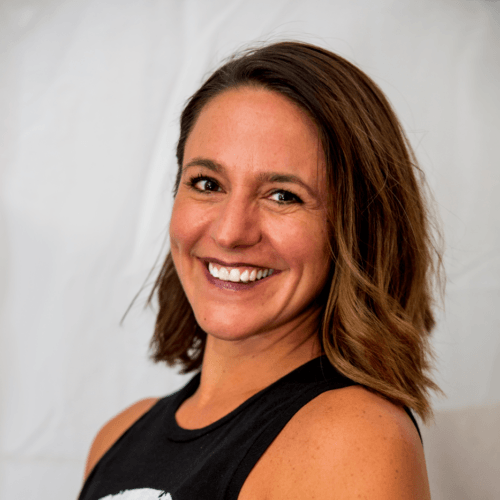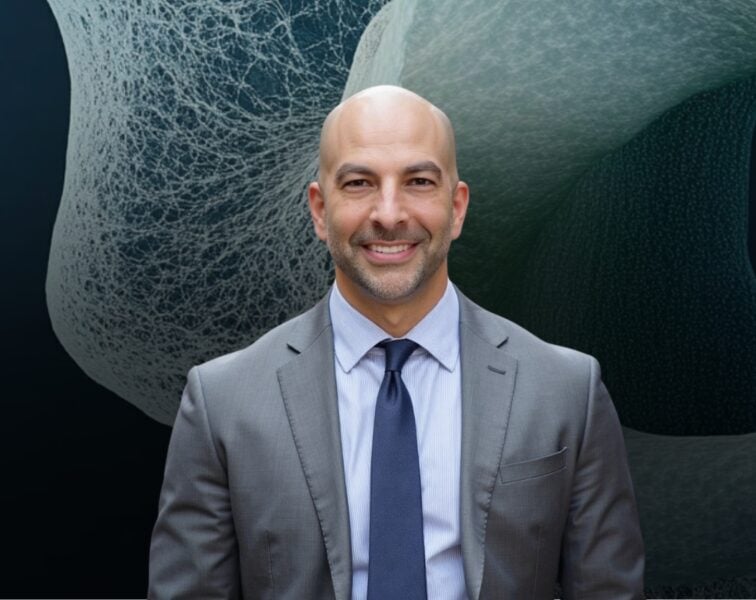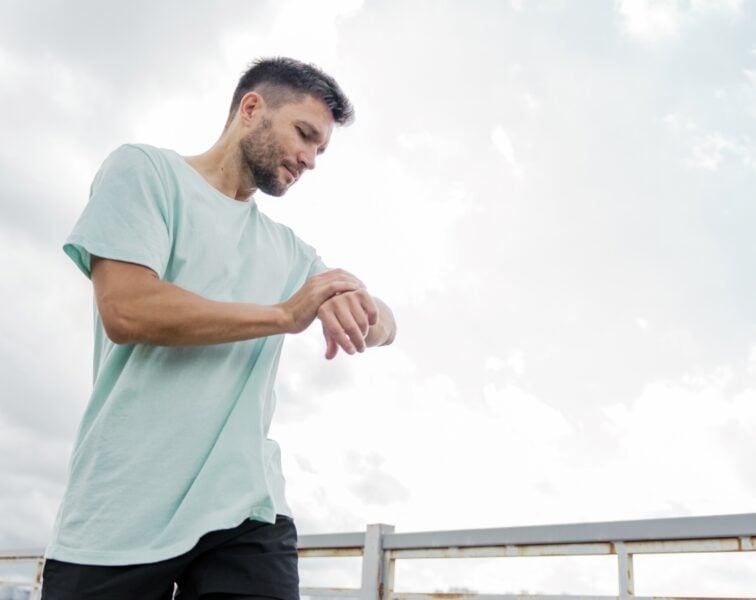Courtney Conley is an internationally renowned foot and gait specialist. In this episode, Courtney delves into the intricate world of foot anatomy and functionality. She explores the complexities of the foot, discussing its anatomy, common injuries, and the importance of understanding its structure in preventing issues. She covers a range of foot ailments, factors contributing to them, treatment options, and prevention strategies. She delves into the significance of loading, balance, range of motion, and posture, emphasizing the crucial role of strength in preventing both injuries and falls. Additionally, she sheds light on the interconnectedness of the kinetic chain, from the leg muscles down to the foot, and how issues within this chain can cascade downstream, leading to various injuries and pathologies. Additionally, she provides a comprehensive overview of footwear, discussing suitable options for both adults and children to promote foot health and mitigate potential problems.
In addition to this interview, Courtney also recorded a series of videos to better explain a number of the concepts discussed such as diagnostic tests that are used to determine mobility and strength and the exercises one should perform to improve the outcomes based on the diagnostics. The interview will be available to everyone while the videos from the gym will only be available to paid subscribers (found at the end of the show notes page).
Subscribe on: APPLE PODCASTS | RSS | GOOGLE | OVERCAST | STITCHER
We discuss:
- Why Courtney chose to specialize in the foot [3:30];
- The vital role of foot strength, function, and health in human movement and well-being [6:15];
- Anatomy of the rear foot and midfoot [10:15];
- The development of flat feet, the impact of footwear, and the benefits of going barefoot [19:45];
- Anatomy of the forefoot, common injuries, and why most injuries occur in the forefoot [23:15];
- Foot musculature and its role in maintaining foot stability and preventing deformities like bunions and hammer toes [30:15];
- The intrinsic musculature of the foot, plantar fasciitis, footwear, and more [39:00];
- Plantar fasciitis: diagnosis, causes, and treatment [51:30];
- Posterior leg muscles: strength assessment methods, role in ACL injuries, and more [59:15];
- Lateral and medial muscles: ankle stability, arch support, big toe stabilization, and exercises to strengthen and prevent injuries [1:04:15];
- Importance of strength of lower leg muscles for gait and preventing shin splints, stress injuries, and more [1:08:15];
- Tendinopathies and other common pathologies related to the anterior and lateral compartments of the foot [1:13:00];
- The importance of midfoot integrity, ankle dorsiflexion, and a discussion of gait alterations [1:19:45];
- Proximal stability and its implications for posture and movement patterns [1:27:00];
- The age-related decline in foot sensation and strength [1:32:45];
- Common toe injuries, treatment, and how to prevent further progression of the injury [1:36:30];
- Preventing falls and managing arthritis with proactive foot care and exercises [1:46:45];
- Footwear: advice for picking shoes that promote foot health [1:54:45];
- Footwear for runners [2:05:30];
- The importance of prioritizing footwear that promotes natural foot movement and strength while considering individual comfort and foot health needs [2:09:30]; and
- More.
Get Peter’s expertise in your inbox 100% free.
Sign up to receive An Introductory Guide to Longevity by Peter Attia, weekly longevity-focused articles, and new podcast announcements.
Why Courtney chose to specialize in the foot [3:30]
Where did your personal obsession with the foot begin?
- Courtney grew up as a ballet dancer and spent a lot of time in ballet pointe shoes
- These shoes are very rigid, stiff, and you’re up on your toes
- All through grade school and high school, she spent a lot of time on her feet
- She always battled foot pain
- She chose this career through self-exploration
- She is a chiropractor by training, and she thought she was going to learn all of this stuff about the foot but that just didn’t happen
- She really didn’t get a lot of education in regards to how the foot actually functions
Why did you choose chiropractor over say podiatry or something that was purely focused on the foot?
- She had this conversation with her father many times
- First she was going to go down the physical therapy route
- But she wanted to create her own treatment protocols
- Her dad has always been a big fan of chiropractic
- She has always been interested in exercise and movement, and it just seemed like a good fit
- She had maybe half a semester in school on the foot, and she was fascinated
- That’s more time than Peter would’ve guessed
The foot has always intrigued Courtney ‒ it’s a very complex part of the body
- With our education, the foot was always viewed as if something hurts in the foot, we’re either going to put an orthotic under it or refer them for some type of surgery
- Courtney was blessed enough to have some really good mentors around that increased her appetite for learning about that, and that’s how it started
She ended up graduating from school and working in a couple of orthotic labs
Courtney went straight from school directly into specializing in the foot
Orthotic labs are presumably a place where people come and have custom orthotics made?
- Yes
- She would work in the front offices and there’d be grinders in the back where they made the orthotics
- They would see patients who had foot pain, and they would cast them for orthotics and make the orthotics
- When she came out of school, her knowledge and practice was largely still based on the conventional way of putting support under the foot, hoping for the best
Courtney has evolved leaps and bounds ahead of that to where she is today
The vital role of foot strength, function, and health in human movement and well-being [6:15]
The complexity of the foot:
- One of our superpowers is that we’re a biped
- We have so many cutaneous receptors, muscle spindles, joint proprioceptors on and in our feet that communicate with our vestibular system so we can become upright and bipedal
- When you take away those functions, it really alters how you’re moving, how you’re interacting with your environment
- It’s always so wild because when we think about it from a rehabilitation perspective, we are very good at rehabbing the low backs
- We do a lot of core strength, we do a lot of glute strength, we do a lot of hip strength
- But you don’t hear many people saying, “I’m doing a lot of foot strength,” and it’s literally our first interface with the ground
- That’s how everything starts
“When we take that [foot strength] away, you’re really making it much more challenging for yourself, and I think it really can alter our survival as well as decrease our quality of life.”‒ Courtney Conley
Using race cars an an analogy
- Peter is obsessed with race cars, and there are 4 things that determine the speed of a car: the engine, the chassis (the aerodynamics, the stiffness), the driver’s capabilities (what they can do in the car), and the tires
- The analogy is clearly that the tires are the feet and you can have the greatest car in the world, the most powerful engine, the most remarkable chassis, and the best driver, and if the tires are shot, none of it matters
- Without them, you simply can’t get the power to the ground and back
- He thinks there’s a lot to be said for how it is imperative
Peter would even go one step further: feet are even a more important part of the human body than tires are to the car
{end of show notes preview}
Would you like access to extensive show notes and references for this podcast (and more)?
Check out this post to see an example of what the substantial show notes look like. Become a member today to get access.

Courtney Conley, D.C.
Courtney Conley holds a B.A. in Kinesiology, B.A. in Human Biology, and a Doctorate in Chiropractic Medicine. Dr. Courtney Conley is the founder of Gait Happens. She is pursuing her dream: helping as many people as possible reclaim their foot function.
In addition to Gait Happens, Dr. Conley is the head of patient care at Total Health Solutions and Total Health Performance, based in colorful Colorado. She is also a founding member of the Healthy Feet Alliance, an international team of practitioners who focus on the promotion of natural footwear to prevent unnecessary surgical procedures.
Dr. Conley is an internationally renowned foot and gait specialist who teaches globally on topics related to foot function, gait mechanics and strategies to combat foot and ankle pain. She is an author, educator, and lecturer, offering credentialed courses to medical professionals all over the world. She has written numerous professional education courses, contributed to textbooks, developed foot and gait protocols and created learning communities for health professionals and “human soles” alike. [Gait Happens]
Instagram: @gaithappens
Website (with curated offers for The Drive listeners): Gait Happens



